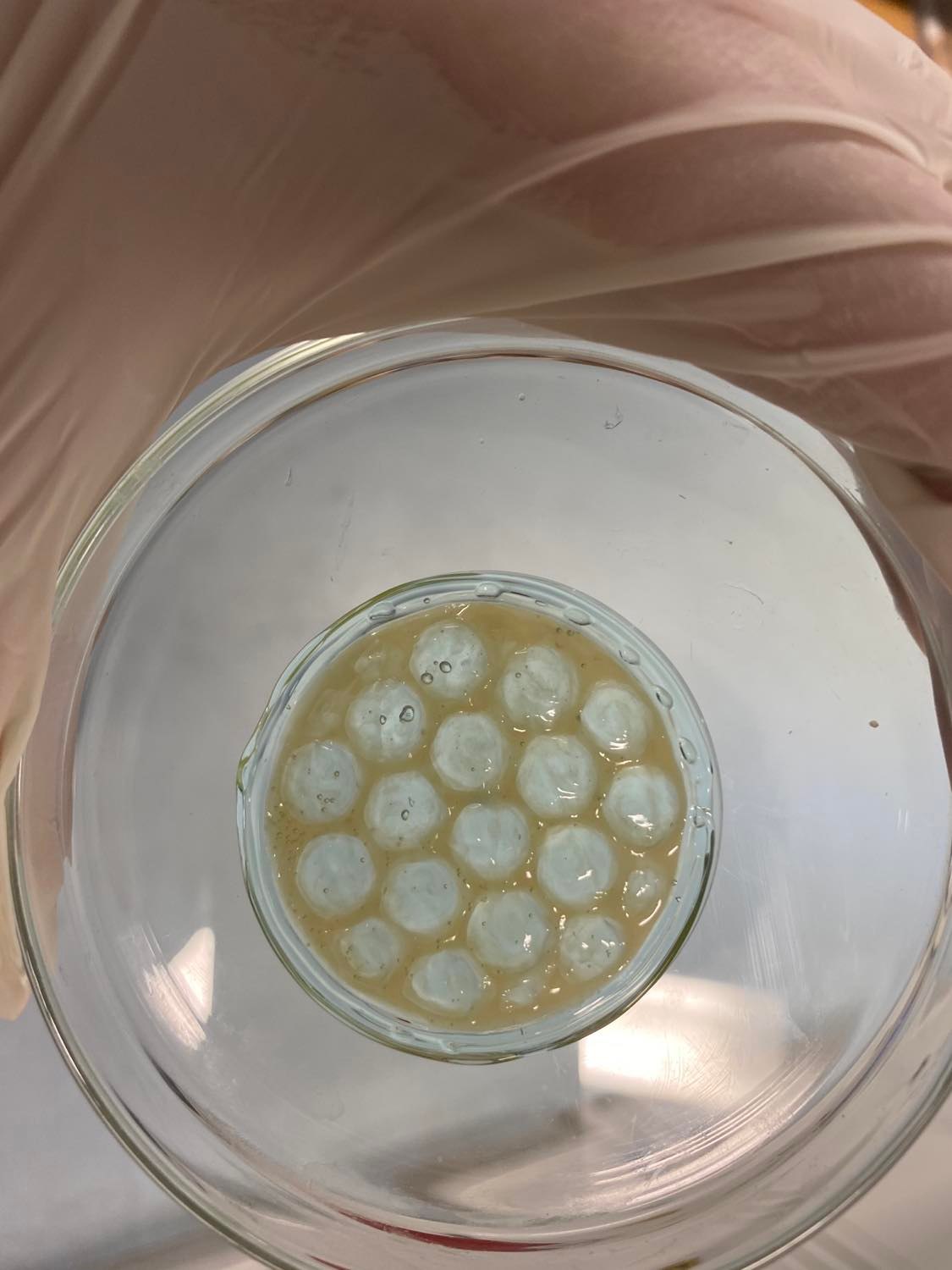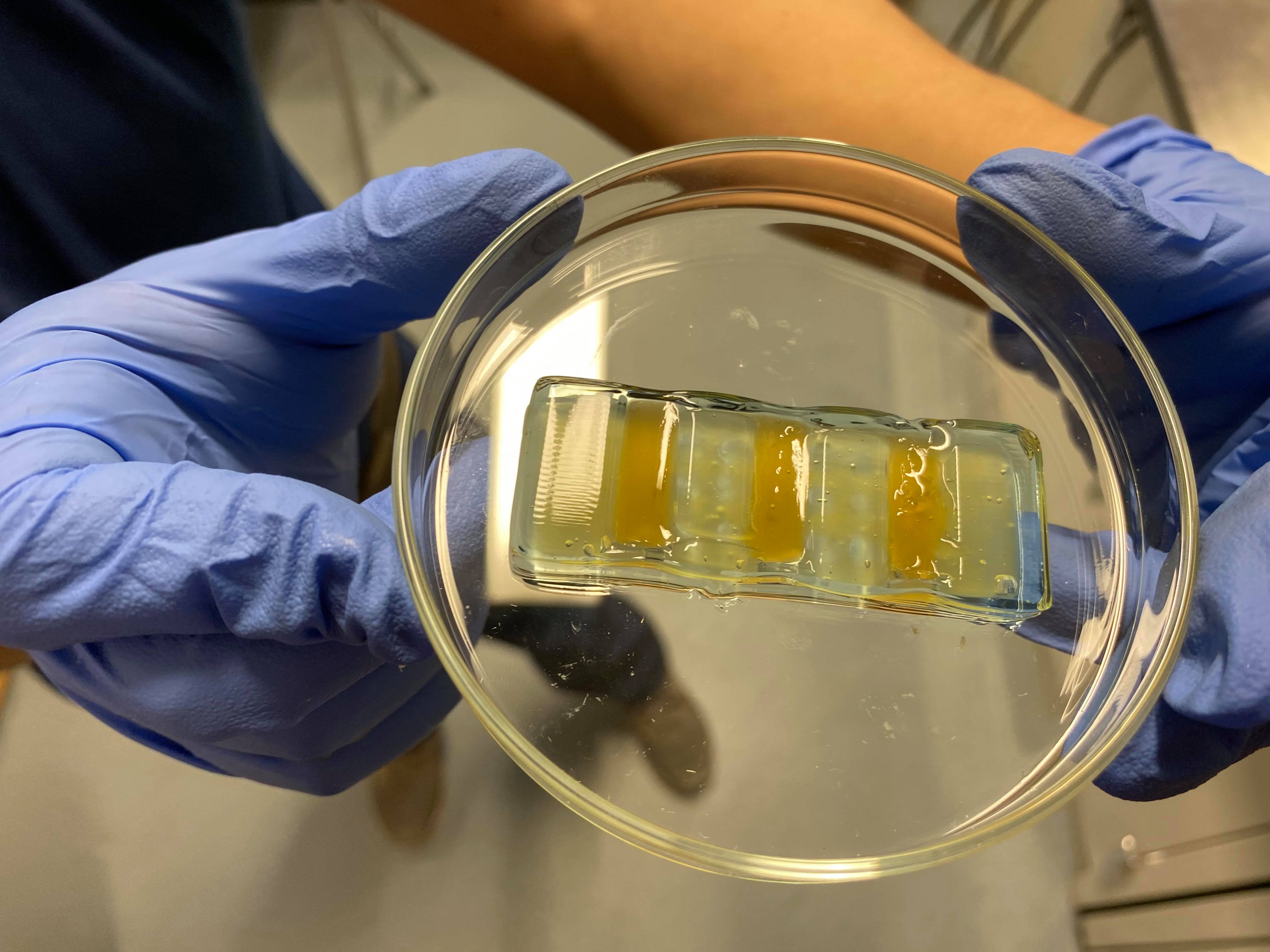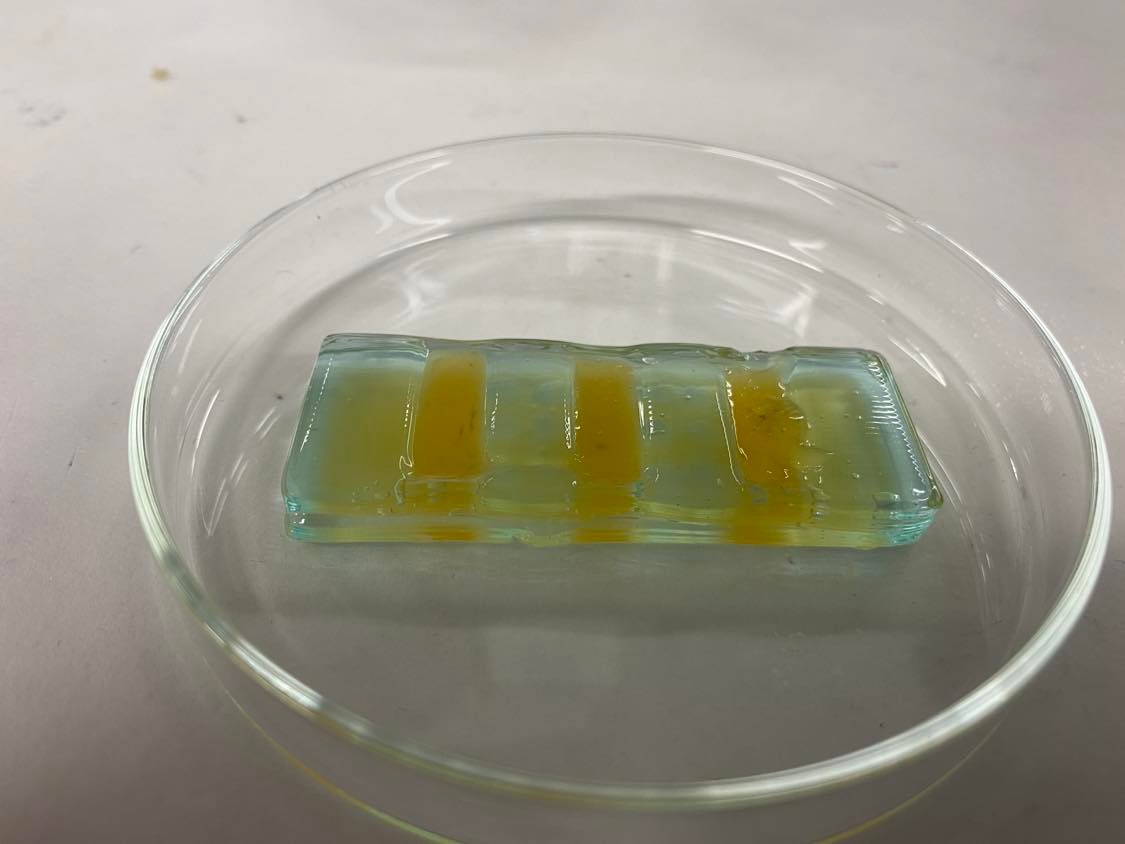Project descriptions
The gelbot project focus on the investigation of stimuli responsive, biodegradable/edible hydrogels which
can be used to produce soft robotic actuators. Our first successful hydrogel candidate is a novel
borax-crosslinked konjac glucomannan (KGM-Borax) gel ink for additive manufacturing.
The new 3D printable KGM-Borax gel shows promise as a gel for fabricating soft robots due to its
preparation with readily available materials, the ease of printing and curing, responsiveness to stimuli,
and the ability to autonomously repair after mechanical damage. Future work will investigate edibility,
toxicity and biodegradability of the printed konjac gels.
Below is a summary article on the research work which were published in a scientific journal.




Toward Stimuli-Responsive Soft Robots with 3D Printed Self-Healing Konjac Glucomannan Gels
Published in 3D Printing and Additive Manufacturing, 2021.
Significant progress in fabricating new multifunctional soft materials and the advances of additive manufacturing technologies have given birth to a new generation of soft robots with complex capabilities, such as crawling, swimming, jumping, gripping, and releasing.
Within this vast array of responsive soft materials, hydrogels receive considerable attention due to their fascinating properties, including biodegradable, self-healing, stimuli-responsive, and large volume transformation.
Konjac glucomannan (KGM) is an edible polysaccharide that forms a pH-responsive, self-healing hydrogel when crosslinked with borax, and it is the focus of this study. A novel KGM-Borax ink for three-dimensional (3D) printing of free-form structures and soft robots at room temperature is presented.
A complete process from ink preparation to the fabrication of a completely cross-linked part is demonstrated. Print setting parameters, rheological properties of the ink and crosslinked gels were characterized.
Print quality was found to be consistent across a wide range of print settings. The minimum line width achieved is 650μm. Tensile testing was carried out to validate the self-healing capability of the KGM-Borax gel.
Results show that KGM-Borax has a high self-healing efficiency of 98%. Self-healing underwater was also demonstrated, a rarity for crosslinked gels. The means to form complex structures via 3D printing, reacting to environmental stimuli and the resilience against damage, make this new KGM-Borax gel a promising candidate for the fabrication of the next generation of soft robots.